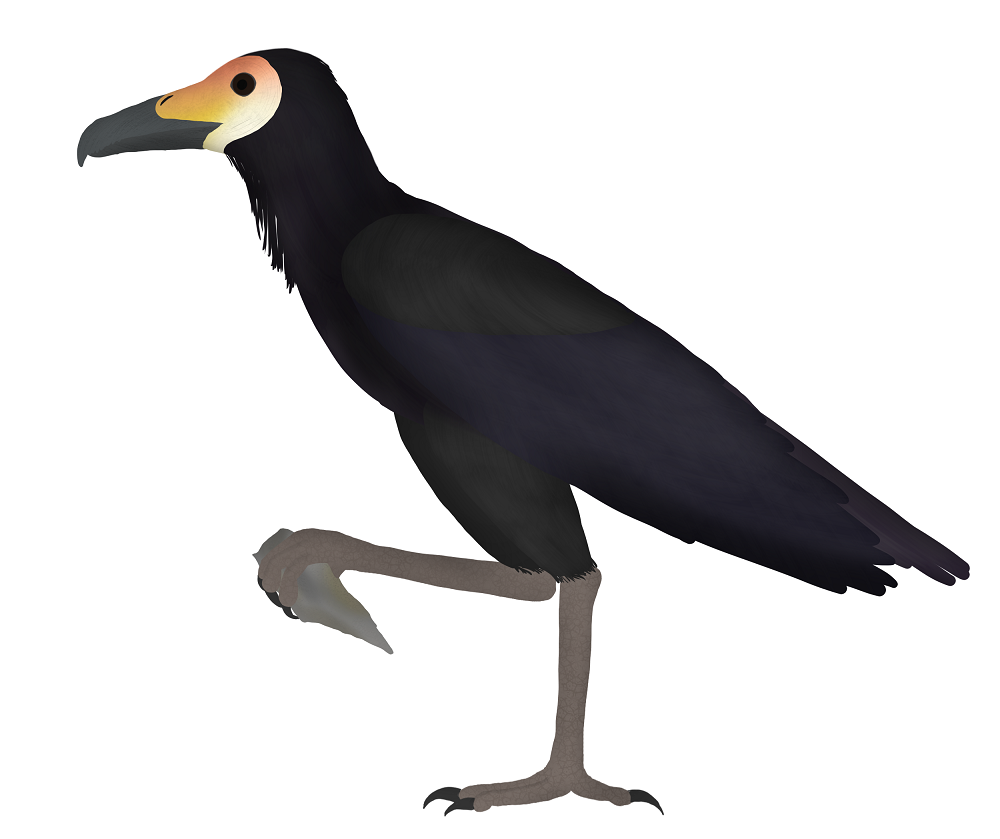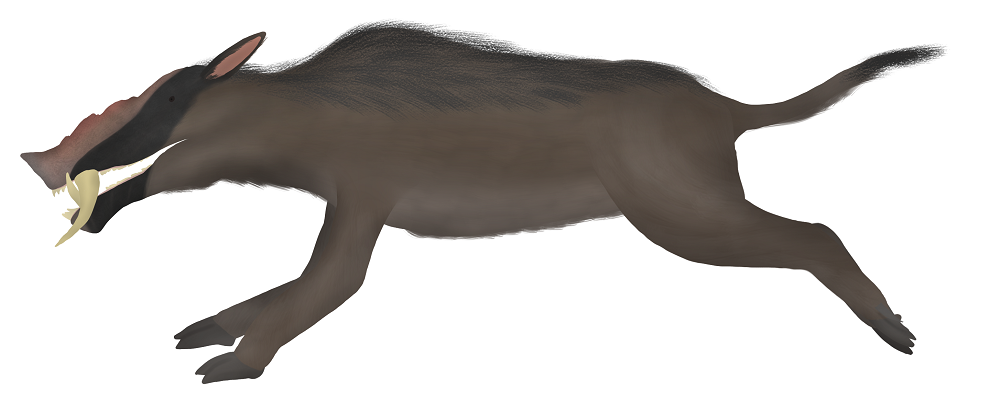
|
French Taiga
35 million years hence
35 million years in the future, the Cenozoic ice age reaches its final glacial maximum. At this point, the Scandinavian Ice Sheet has grown to a similar extent as during the glacial maxima of the Pleistocene, albeit not quite to the same depth. This will be the last hurrah of the ice age, as the world gradually warms over the Telogene. What was once the city of Paris, France is now a thick conifer forest, seasonally buried by snow.
Some of the animals of the European taiga are uncannily reminiscent of those that lived during the Pleistocene ice age. Large, woolly descendants of cattle browse in these forests, as do hebivorous procyonids. Both of these are preyed upon by predatory descendants of pigs and feral dogs. Smaller inhabitants of the forests include songbirds, rodents, and small predatory mammals.
| Colophotherium |
Coroner crow |
Morrowbeast |
|
Click on a tab to learn more about that species.

Colophotherium grimmorum
Colophotherium is one of the many descendants of cattle present worldwide 35 million years in the future. This species can be found in colder wooded habitats in northern Eurasia. Coat density changes with the seasons, allowing Colophotherium to inhabit the same regions year-round. The head bears an inflatable resonating chamber, similar to that present in saiga. Herds will communicate over large distances with amplified calls, and in fights, it is usually the one with the louder moo that wins.
The diet of Colophotherium consists of grass, leaves, and bark. As an individual grows, the horns are first used to scrape bark off of trees; at a certain age, the incisors and mouth musculature will be robust enough to remove bark on its own. The large horns present on the heads of adults are often used to fell trees, so that an individual can feast on leaves present higher up. The molars are honed to handle rough and hard-to-chew foodstuffs, and the extensive ruminant stomach can easily digest a day's worth of bark.

Entaviastes sp.
It is likely that after vultures go extinct, corvids will step up to fill the scavenging niche; the behavior is already exploited by numerous species of corvids and ravens. Coroner crows are a diverse lineage of primarily scavenging corvids, widespread in Eurasia, Africa, and Australia 30 to 50 million years in the future. Descended from crows in the genus Corvus, their wingspans are usually between 4 and 6 feet. Depending on species, between 50% and 95% of the diet consists of carrion, with the rest consisting of small prey, eggs, fruits, seeds, and dung.
Coroner crows are noteworthy for their high intelligence and ingenuity. They appear to be able to not only communicate the locations of carcasses, but also where they will likely be found in the future. They will gather to watch prey die before eating it. A few populations in East Africa and central Asia have even been observed using sharp rocks as hand axes, with which they butcher and scrape meat off of carcasses. Although they have not yet formed anything recognizable as a society, being of a more loosely gregarious nature, it might be worth keeping an eye on them.

Phobotherium trachyops
While artiodactyls are generally thought to be a herbivorous clade, this is more of a guideline than a rule. Occasional carnivory is present across the clade, but at least two groups of artiodactyls, suids and hippopotamids, regularly eat meat as well as plant matter. One major lineage, Cetacea, is exclusively carnivorous. It is therefore not implausible that more carnivorous artiodactyls will evolve in the future.
Morrowbeasts are descended from wild boar, which prospered both during and after the Holocene. In the wake of larger carnivorans such as bears and big cats, millions of years of evolution have honed these hogs from aggressive generalists to apex predators, with a shoulder height of two meters. Individuals patrol large territories, up to hundreds of square miles, and, with the exception of mothers and juveniles, generally do not tolerate each other; most of the face is bare and rugose, and older individuals often bear scars from intraspecific fights. Morrowbeasts bear large tusks inherited from their suid ancestors, originally evolved for intraspecific conflict; here, they have been exapted to also inflict wounds on prey organisms. Morrowbeasts prey upon medium-to-large herbivorous mammals, such as bovids, cervids, procyonids, and other suids.
|
|




